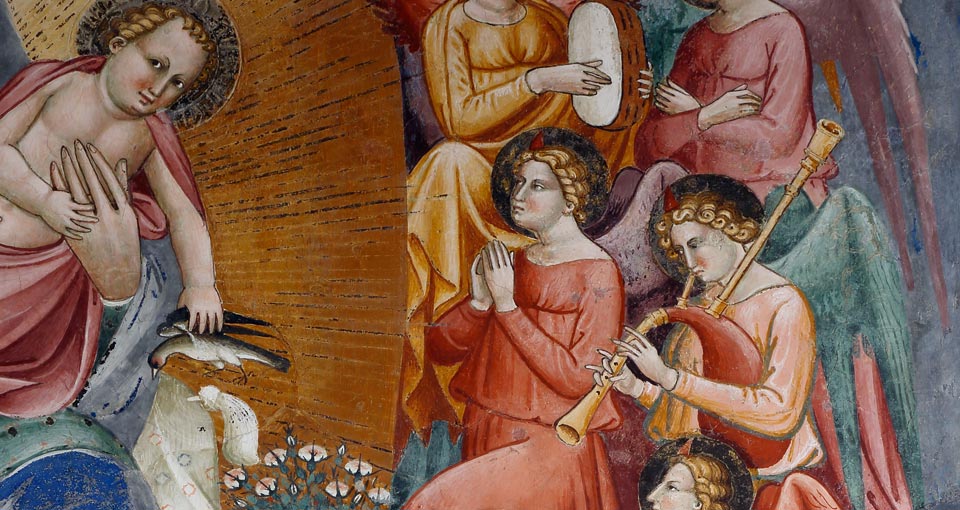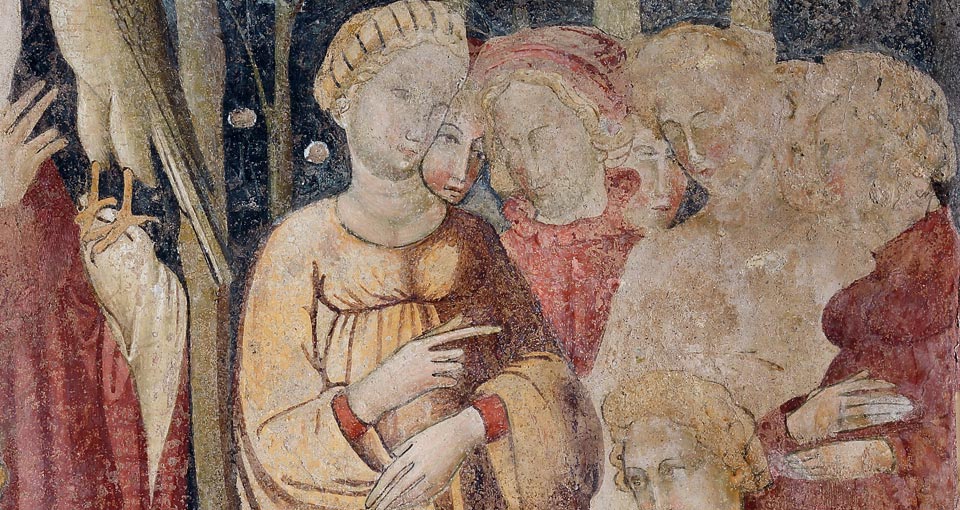







|
 |
 San Lorenzo in PonteThe church of San Lorenzo al Ponte, situated at the end of Via del Castello, was built by the city authorities in the 13th century. Constructed in the Romanesque style, it consists of a single nave covered with a trussed roof and ending in a raised and vaulted chancel. A small portico, or possibly even just a penthouse-style canopy, was erected on the north wall in the early 14th century to protect a fresco depicting the Madonna and Child (whose only surviving detail is the Virgin's face) which may have been painted by Simone Martini in c. 1310. Popular devotion for the image prompted a decision in the early 15th century to build (or extend) the portico along the entire wall of the church in order to form a self-contained oratory adjacent to it. Both the church and the portico are extensively decorated with frescoes painted in the early 1410s by Florentine artist Cenni di Francesco di ser Cenni, a painter who trained in the Giottesque circle of Andrea di Cione di Arcangelo, better known as Orcagna. The fresco cycle is dedicated to life after death, a theme associated with the church's titular saint, Lawrence, who has the power to save souls in Purgatory. The artist uses evocative details to depict the afterlife in Hell, Purgatory and Heaven.
|
||


